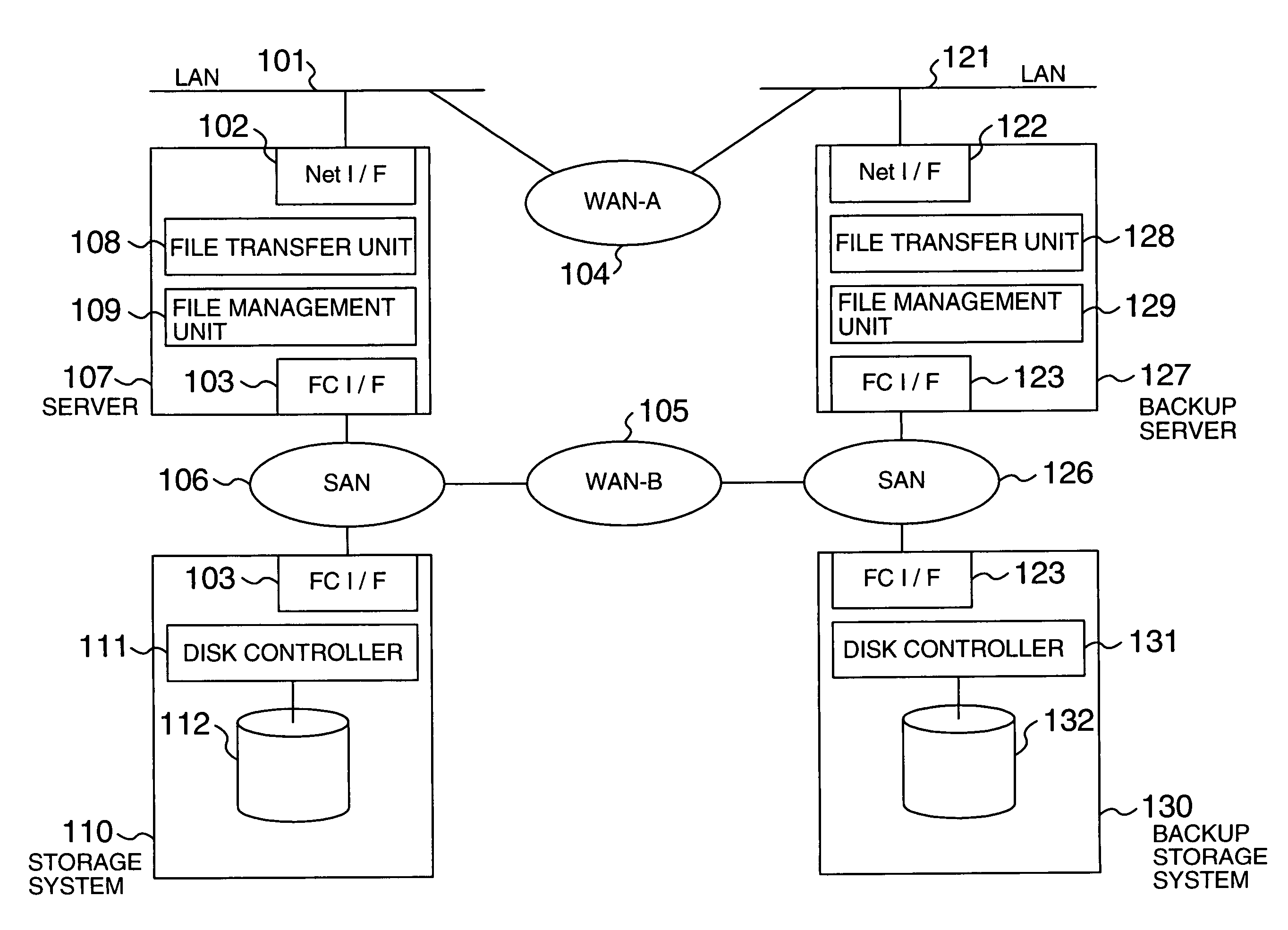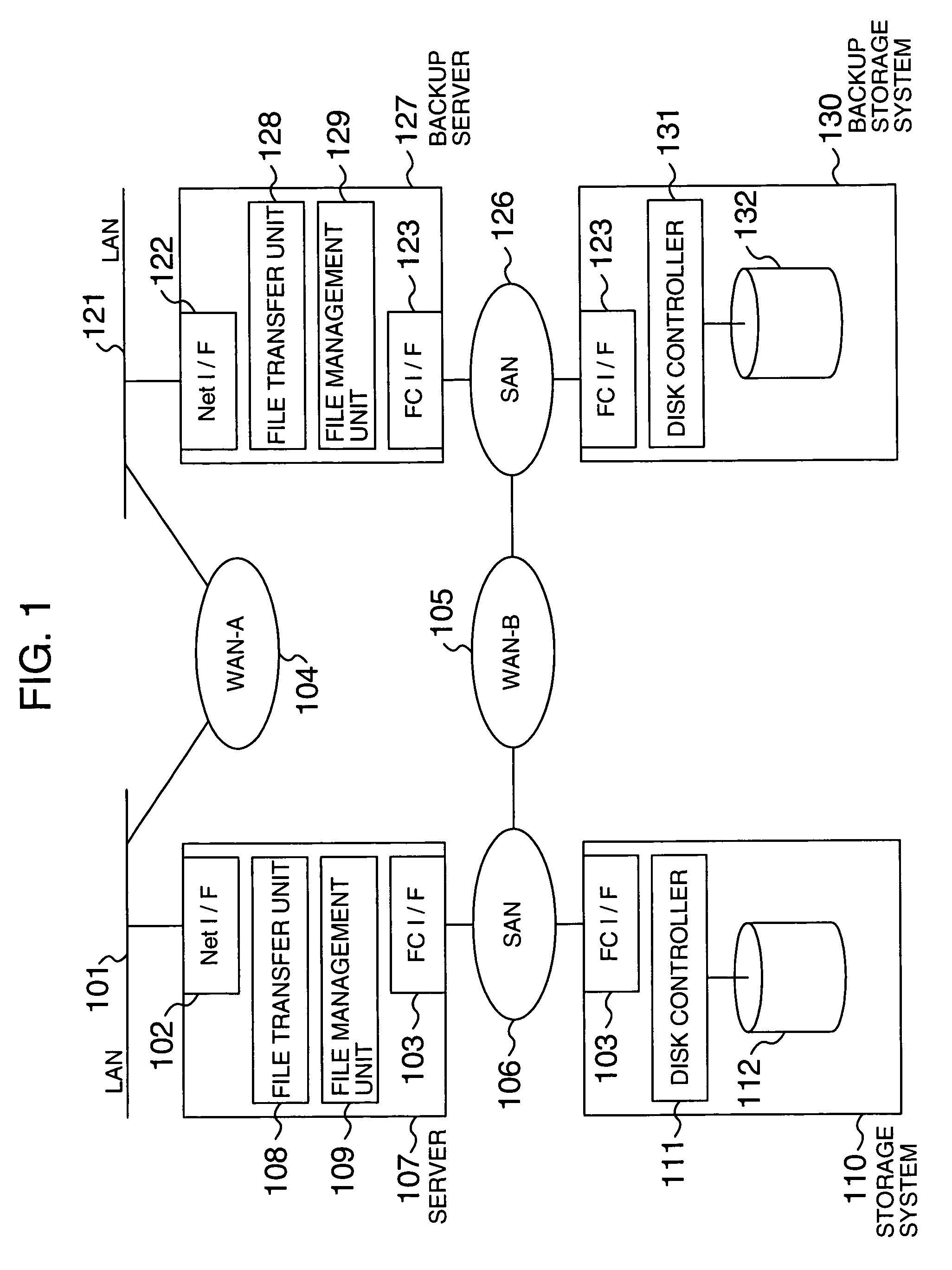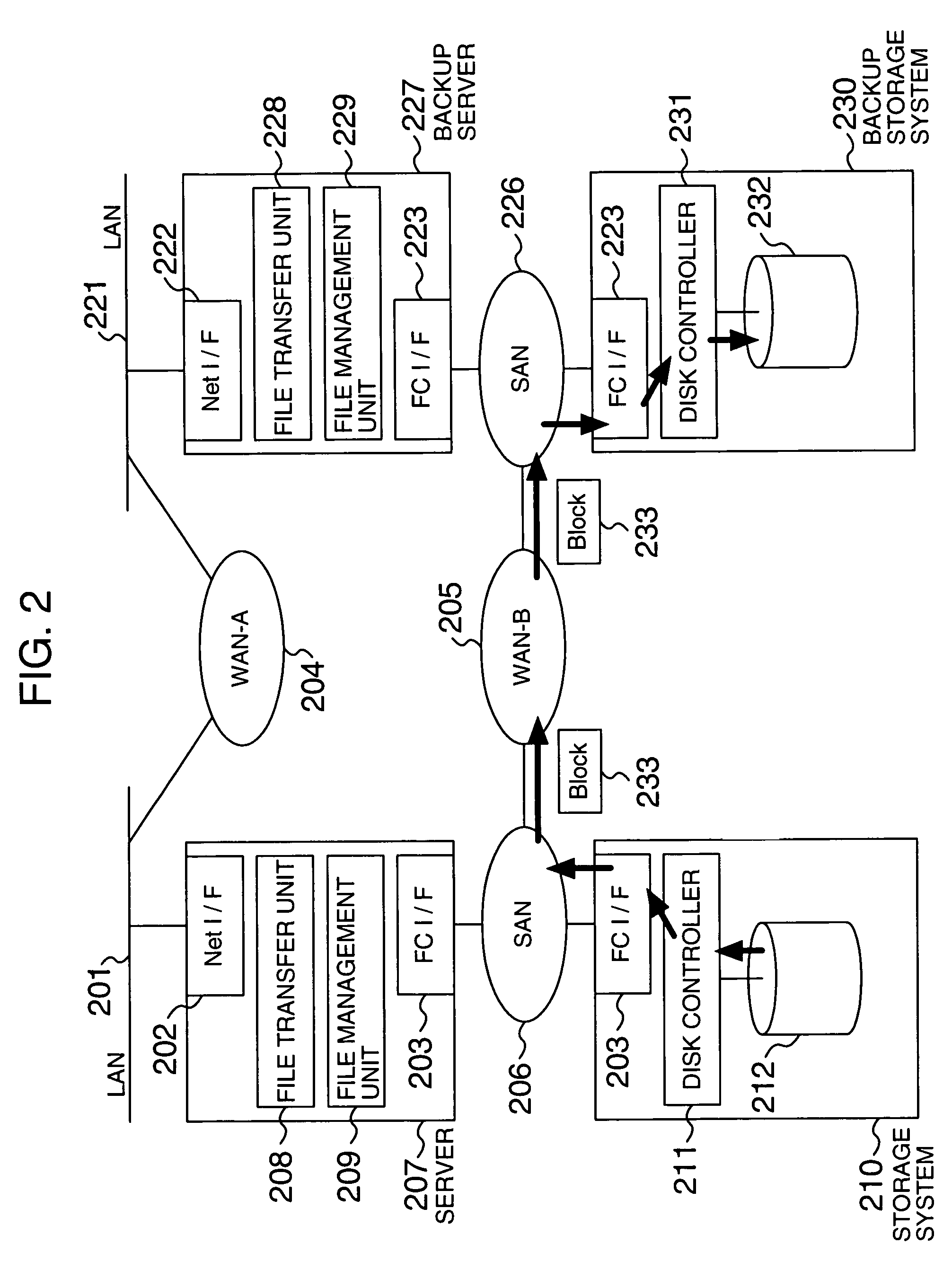[0012]One of the concepts of the present invention is that block-basis data transfer and file-basis data transfer can be switched, as necessary, for transferring data from one storage unit (for example, storage, disk, volume, storage area) to another. Another concept is that two types of transfer technology can be used as necessary: a transfer technology used in a system that manages data, stored in a storage unit, at a block level and a transfer technology used in a system that manages data at a file level. This makes it possible to realize a more flexible data transfer with no limitation of a single-protocol data transfer. In addition, the user can select from a wider range of networks according to various data transfer conditions and status (user needs, network usage status, etc.).
[0013]More specifically, the present invention provides a computer system that transfers data from a first storage unit to a second storage unit via a network (for example, SAN, LAN, WAN). The computer system comprises a first controller that transfers data, stored in the first storage unit, to the second storage unit on a block basis using a block transfer protocol; a table (for example, file / block management table) that associates a file composed of a plurality of blocks of data with blocks of data constituting the file; and a second controller that, in response to information that identifies a block (for example, logical block address) from the first controller, identifies a file corresponding to the block using the table and transfers the identified file to the second storage unit on a file basis using a file transfer protocol. The first controller and the second controller may reside in a storage system and a server with the file management function, respectively, as in a SAN configuration or may reside in the same system / cabinet as in a NAS (Network Attached Storage) configuration. Data may be transferred via a plurality of networks to flexibly perform processing for a network failure or to utilize the network characteristics (both a relatively high speed, high reliability, high cost network and a relatively low speed, low reliability, low cost network are used); for example, data under the block transfer protocol is transferred in a SAN where resources are connected via fibre channels and data under the file transfer protocol is transferred in a LAN.
[0014]When the transfer of data from the first storage unit using the block transfer protocol fails, for example, when a failure is detected at the time data is read from the first storage unit or a transfer processing failure including a network failure is detected (is judged as a failure) or when a data reception rejection is received from the system managing the second storage unit, the first controller may notify the information, which identifies the transfer-failed block, to the second controller. This allow data transfer processing to be switched at a predetermined time such as a user specified time and, in particular, assures data transfer processing when the data transfer processing fails.
[0017]The first storage unit comprises at least a main volume and a sub volume. When the block-basis transfer of data from the sub volume fails, the first controller notifies information, which identities the transfer-failed data block, to the second controller and, in response to an instruction to transfer a plurality of blocks of data related to the transfer-failed file from the second controller, transfers data stored on the main volume and corresponding to the plurality of blocks on a block basis. This makes it possible to use a data processing method that minimizes the effect on the processing that is executed usually using the main volume.
 Login to View More
Login to View More  Login to View More
Login to View More 


